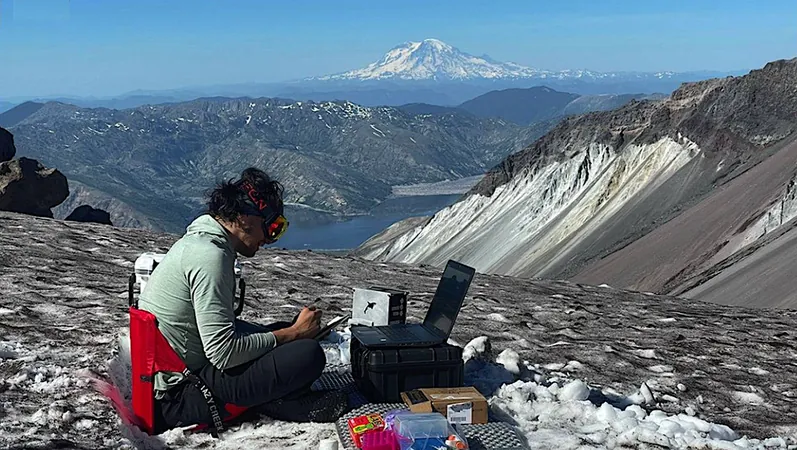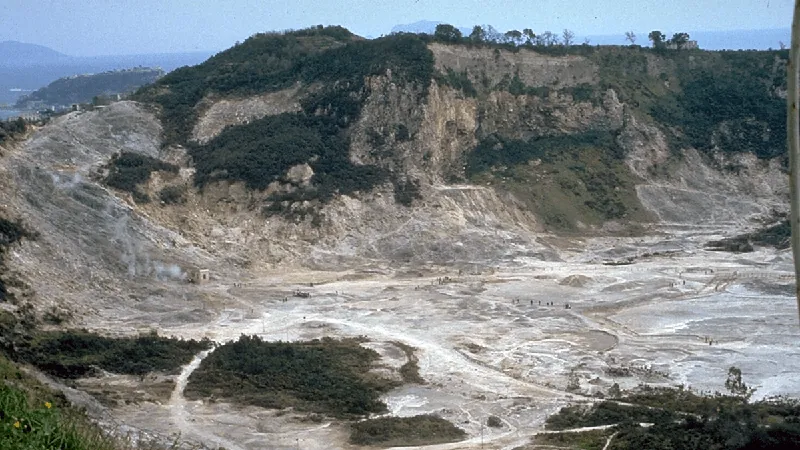
Unveiling the Secrets of Life: Free Video Microscopy in Aquatic Extremes
2025-04-04
Author: Siti
In a groundbreaking study, researchers have harnessed in situ video microscopy to explore the motion, morphology, and optical properties of microbes as potential biosignatures in some of the most extreme aquatic environments on Earth. This pioneering investigation focused on locations that have never been subjected to such imaging techniques, including seawater, sea ice brines, cryopeg brines, hypersaline pools, hyperalkaline springs, and glaciovolcanic cave ice.
Surprisingly, all samples, apart from cryopeg brines, exhibited active microbial motion without the need for sample treatment. The cryopeg brines only revealed activity when subjected to warmed conditions—a crucial insight into how temperature influences microbial life in frigid habitats.
Detailed imaging revealed a variety of organisms, including a non-motile diatom captured in the Greenland sea ice brine—characterized by visible cell walls and organelles. Conversely, quickly swimming microorganisms were also documented, showcasing the rich biodiversity present in these icy ecosystems.
Temperature's Effect on Microbial Activity
How does temperature alter microbial activity? Generally, samples collected at temperatures below 4°C displayed low levels of motility. However, distinct differences in behavior were noted: as ambient temperatures increased or when the amino acid L-serine was introduced, a significant uptick in motile cells was observed, highlighting the microorganisms' responsiveness to environmental changes. Remarkably, scientists also documented chemotaxis and thermotaxis—behavioral responses to chemical gradients and temperature changes—in various samples.
Using an innovative open-source autonomous software tool, the research team classified the data while ensuring that computational demands could be catered to even by space-travel-friendly computers. This technological advancement could revolutionize how we approach life detection not only on Earth but also on other planets.
Excitingly, the study's findings underscore the vast potential of volumetric light microscopy as a powerful tool for life detection in extreme environments. However, the researchers highlighted the need for further innovative methods to stimulate microbial action in situ, data processing that accommodates bandwidth limitations typical of space missions, and the development of specialized instruments for capturing cell-like entities for deeper chemical analyses.
The implications of this research reach far beyond Earth's polar regions. The insights gained could pave the way for astrobiological explorations, aiding scientists in the quest to determine whether life exists in similar extraterrestrial environments. As we venture further into the cosmos, studies like these are crucial for understanding life's resilience and adaptability in even the harshest conditions.
This research serves as a reminder of the boundless wonders that still exist in Earth's most extreme habitats and offers tantalizing possibilities for future discoveries in our search for life beyond our planet. Stay tuned as we continue to unveil the mysteries of the microbial world!
Call to Action
Don't miss out on the next exciting chapter in the exploration of life in our universe!




 Brasil (PT)
Brasil (PT)
 Canada (EN)
Canada (EN)
 Chile (ES)
Chile (ES)
 Česko (CS)
Česko (CS)
 대한민국 (KO)
대한민국 (KO)
 España (ES)
España (ES)
 France (FR)
France (FR)
 Hong Kong (EN)
Hong Kong (EN)
 Italia (IT)
Italia (IT)
 日本 (JA)
日本 (JA)
 Magyarország (HU)
Magyarország (HU)
 Norge (NO)
Norge (NO)
 Polska (PL)
Polska (PL)
 Schweiz (DE)
Schweiz (DE)
 Singapore (EN)
Singapore (EN)
 Sverige (SV)
Sverige (SV)
 Suomi (FI)
Suomi (FI)
 Türkiye (TR)
Türkiye (TR)
 الإمارات العربية المتحدة (AR)
الإمارات العربية المتحدة (AR)